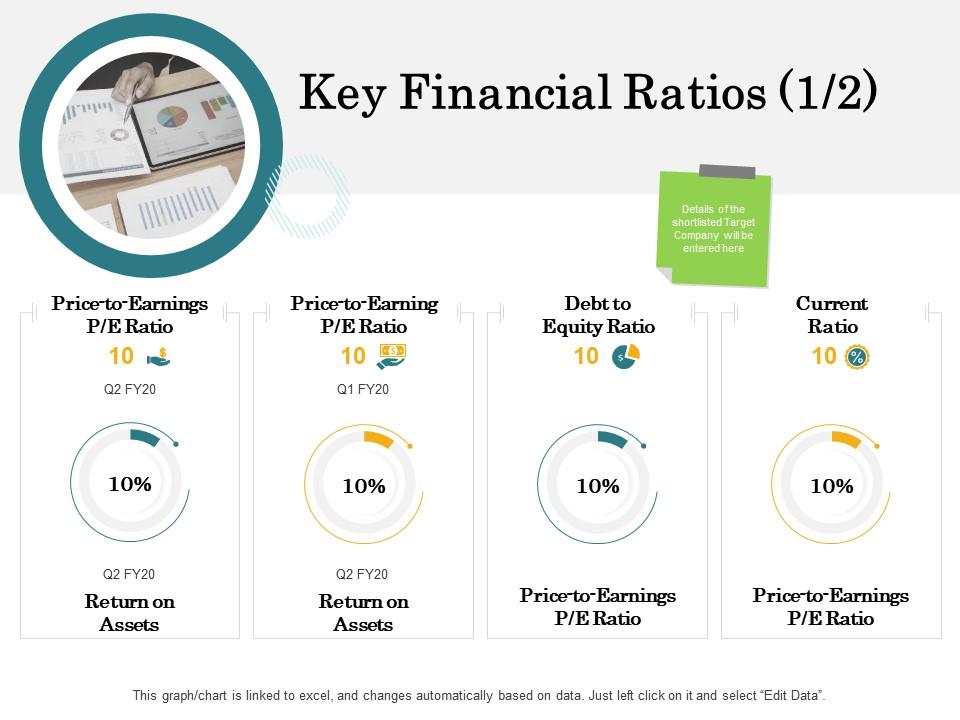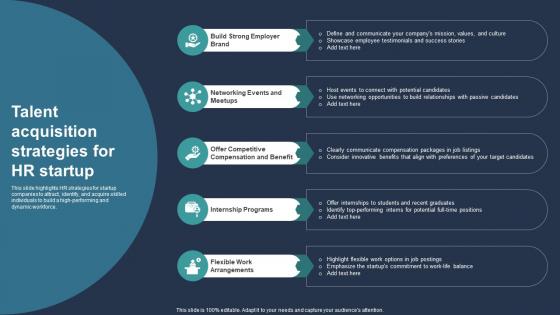How to Identify Potential Acquisition Targets
Identifying potential acquisition targets is a critical step in the startup acquisition process. To successfully identify targets, startups must consider several key factors, including market trends, competitive landscape, and financial performance. By analyzing these factors, startups can identify potential targets that align with their strategic goals and objectives.
Market trends play a significant role in identifying potential acquisition targets. Startups must stay up-to-date with the latest market developments and trends, including emerging technologies, changing consumer behaviors, and shifting regulatory landscapes. By understanding these trends, startups can identify potential targets that are well-positioned to capitalize on emerging opportunities.
The competitive landscape is another critical factor to consider when identifying potential acquisition targets. Startups must analyze their competitors’ strengths and weaknesses, as well as their market position and strategy. By understanding the competitive landscape, startups can identify potential targets that can help them gain a competitive advantage.
Financial performance is also an essential factor to consider when identifying potential acquisition targets. Startups must analyze the financial performance of potential targets, including their revenue growth, profitability, and cash flow. By understanding the financial performance of potential targets, startups can identify companies that are financially stable and well-positioned for growth.
Examples of successful acquisitions in the startup space include Facebook’s acquisition of Instagram and WhatsApp, and Google’s acquisition of Android and Waze. These acquisitions demonstrate the importance of identifying potential targets that align with a startup’s strategic goals and objectives.
By considering market trends, competitive landscape, and financial performance, startups can identify potential acquisition targets that can help them drive growth and expansion. Effective startup acquisition strategies require a deep understanding of these factors and the ability to analyze and evaluate potential targets.
Evaluating Acquisition Opportunities: A Framework for Startups
Evaluating acquisition opportunities is a critical step in the startup acquisition process. To ensure that potential targets align with their strategic goals and objectives, startups must assess several key factors, including strategic fit, financial viability, and cultural alignment. By using a structured framework to evaluate acquisition opportunities, startups can make informed decisions and drive growth through successful acquisitions.
Strategic fit is a critical factor to consider when evaluating acquisition opportunities. Startups must assess whether the potential target aligns with their overall business strategy and goals. This includes evaluating the target’s products, services, and technology, as well as its market position and competitive landscape. By assessing strategic fit, startups can ensure that the acquisition will drive growth and expansion, rather than creating unnecessary complexity or distraction.
Financial viability is another essential factor to consider when evaluating acquisition opportunities. Startups must assess the financial performance of the potential target, including its revenue growth, profitability, and cash flow. By evaluating financial viability, startups can ensure that the acquisition will drive financial returns and support their overall growth strategy.
Cultural alignment is also a critical factor to consider when evaluating acquisition opportunities. Startups must assess whether the potential target’s culture and values align with their own. This includes evaluating the target’s leadership team, organizational structure, and employee base. By assessing cultural alignment, startups can ensure that the acquisition will drive long-term success and minimize the risk of integration challenges.
Due diligence is a critical step in the evaluation process. Startups must conduct a thorough analysis of the potential target, including its financial performance, market position, and competitive landscape. By conducting due diligence, startups can identify potential risks and opportunities, and make informed decisions about the acquisition.
Examples of successful acquisitions that demonstrate the importance of evaluating acquisition opportunities include Facebook’s acquisition of Instagram and Google’s acquisition of Android. These acquisitions demonstrate the importance of assessing strategic fit, financial viability, and cultural alignment, as well as conducting thorough due diligence.
By using a structured framework to evaluate acquisition opportunities, startups can drive growth and expansion through successful acquisitions. Effective startup acquisition strategies require a deep understanding of the evaluation process and the ability to assess strategic fit, financial viability, and cultural alignment.
Structuring Acquisition Deals: Key Considerations for Startups
Structuring acquisition deals is a critical step in the startup acquisition process. To ensure that the deal is successful and aligns with their strategic goals and objectives, startups must consider several key factors, including deal structure, valuation, and negotiation strategies. By understanding these factors, startups can create a deal that drives growth and expansion, while minimizing risk and maximizing returns.
Deal structure is a critical consideration when structuring acquisition deals. Startups must decide whether to pursue a stock purchase, asset purchase, or merger. Each structure has its own advantages and disadvantages, and startups must carefully evaluate their options to determine the best approach. For example, a stock purchase may provide tax benefits, while an asset purchase may allow startups to avoid assuming liabilities.
Valuation is another essential consideration when structuring acquisition deals. Startups must determine the value of the target company, taking into account factors such as revenue growth, profitability, and market position. By understanding the valuation, startups can negotiate a fair price and avoid overpaying for the target company.
Negotiation strategies are also critical when structuring acquisition deals. Startups must develop a negotiation strategy that takes into account the interests and goals of all parties involved. This includes understanding the target company’s motivations, as well as the interests of investors, employees, and other stakeholders. By developing a effective negotiation strategy, startups can create a deal that meets the needs of all parties and drives growth and expansion.
Examples of successful acquisition deals that demonstrate the importance of structuring acquisition deals include Facebook’s acquisition of Instagram and Google’s acquisition of Android. These deals demonstrate the importance of considering deal structure, valuation, and negotiation strategies to create a successful acquisition.
By understanding the key considerations for structuring acquisition deals, startups can create a deal that drives growth and expansion, while minimizing risk and maximizing returns. Effective startup acquisition strategies require a deep understanding of deal structure, valuation, and negotiation strategies, as well as the ability to adapt to changing circumstances and negotiate complex deals.
Integrating Acquired Companies: A Post-Acquisition Strategy
Integrating acquired companies is a critical step in the startup acquisition process. To ensure that the acquisition is successful and drives growth and expansion, startups must develop a post-acquisition strategy that addresses cultural integration, operational alignment, and retention of key talent. By understanding the importance of integration and developing a effective strategy, startups can minimize the risk of integration challenges and maximize the benefits of the acquisition.
Cultural integration is a critical aspect of post-acquisition integration. Startups must ensure that the acquired company’s culture and values align with their own, and that the integration process is managed in a way that minimizes disruption to employees and customers. This includes developing a clear communication strategy, establishing a shared vision and mission, and providing training and support to employees.
Operational alignment is also essential for successful integration. Startups must ensure that the acquired company’s operations are aligned with their own, and that the integration process is managed in a way that minimizes disruption to customers and employees. This includes developing a clear plan for integrating systems and processes, establishing a shared organizational structure, and providing training and support to employees.
Retention of key talent is also critical for successful integration. Startups must ensure that the acquired company’s key employees are retained and integrated into the startup’s organization, and that the integration process is managed in a way that minimizes disruption to employees and customers. This includes developing a clear plan for retaining key talent, establishing a shared vision and mission, and providing training and support to employees.
Examples of successful integrations that demonstrate the importance of post-acquisition strategy include Facebook’s acquisition of Instagram and Google’s acquisition of Android. These integrations demonstrate the importance of addressing cultural integration, operational alignment, and retention of key talent to drive growth and expansion.
By understanding the importance of post-acquisition integration and developing a effective strategy, startups can minimize the risk of integration challenges and maximize the benefits of the acquisition. Effective startup acquisition strategies require a deep understanding of the integration process and the ability to adapt to changing circumstances and manage complex integrations.
Common Mistakes to Avoid in Startup Acquisitions
Startup acquisitions can be a complex and challenging process, and there are several common mistakes that startups can make when pursuing an acquisition. By understanding these mistakes and taking steps to avoid them, startups can increase their chances of success and achieve their growth and expansion goals.
One common mistake that startups make is overpaying for the target company. This can happen when startups get caught up in the excitement of the acquisition and fail to conduct thorough due diligence. To avoid this mistake, startups should carefully evaluate the target company’s financial performance, market position, and competitive landscape, and negotiate a fair price based on this analysis.
Another common mistake is failing to conduct thorough due diligence. Due diligence is the process of carefully evaluating the target company’s financial performance, market position, and competitive landscape, and identifying potential risks and opportunities. By failing to conduct thorough due diligence, startups can miss critical information that can impact the success of the acquisition.
Neglecting cultural integration is also a common mistake that startups make. Cultural integration is the process of combining the cultures of the two companies, and it is critical to the success of the acquisition. By neglecting cultural integration, startups can create confusion and disruption among employees, customers, and stakeholders, and ultimately impact the success of the acquisition.
Examples of acquisitions that went wrong due to these mistakes include the acquisition of AOL by Time Warner and the acquisition of Quibi by Verizon. These acquisitions demonstrate the importance of avoiding common mistakes and taking a careful and strategic approach to startup acquisitions.
By understanding these common mistakes and taking steps to avoid them, startups can increase their chances of success and achieve their growth and expansion goals. Effective startup acquisition strategies require a deep understanding of the acquisition process and the ability to adapt to changing circumstances and manage complex integrations.
Measuring the Success of Acquisition Strategies
Measuring the success of acquisition strategies is crucial for startups to evaluate the effectiveness of their acquisition efforts and make data-driven decisions for future growth. By tracking and analyzing key performance indicators (KPIs), startups can assess the success of their acquisition strategies and identify areas for improvement.
Revenue growth is a key KPI for measuring the success of acquisition strategies. Startups should track revenue growth before and after the acquisition to evaluate the impact of the acquisition on their top-line growth. Additionally, startups should track revenue growth from the acquired company to evaluate its contribution to the overall revenue growth.
Market share expansion is another important KPI for measuring the success of acquisition strategies. Startups should track their market share before and after the acquisition to evaluate the impact of the acquisition on their market position. Additionally, startups should track market share expansion in new markets or geographies to evaluate the success of their expansion efforts.
Return on investment (ROI) is a critical KPI for measuring the success of acquisition strategies. Startups should track the ROI of their acquisition efforts to evaluate the financial returns of their investment. Additionally, startups should track the ROI of the acquired company to evaluate its contribution to the overall financial performance.
Examples of successful acquisition strategies that demonstrate the importance of measuring success include Facebook’s acquisition of Instagram and Google’s acquisition of Android. These acquisitions demonstrate the importance of tracking and analyzing KPIs to evaluate the success of acquisition strategies and make data-driven decisions for future growth.
By measuring the success of acquisition strategies, startups can evaluate the effectiveness of their acquisition efforts and make data-driven decisions for future growth. Effective startup acquisition strategies require a deep understanding of the acquisition process and the ability to track and analyze KPIs to evaluate success.
Conclusion: Mastering Startup Acquisition Strategies for Long-Term Success
Mastering startup acquisition strategies is crucial for long-term success in today’s fast-paced and competitive business landscape. By understanding the importance of acquisitions as a growth strategy, identifying potential acquisition targets, evaluating acquisition opportunities, structuring acquisition deals, integrating acquired companies, avoiding common mistakes, and measuring the success of acquisition strategies, startups can drive growth and expansion and achieve their goals.
Effective startup acquisition strategies require a deep understanding of the acquisition process and the ability to adapt to changing circumstances and manage complex integrations. By applying the strategies outlined in this article, startups can increase their chances of success and achieve long-term growth and expansion.
Startup acquisition strategies are not a one-size-fits-all solution, and each startup must develop a unique approach that aligns with its goals and objectives. By understanding the key considerations and best practices outlined in this article, startups can develop a comprehensive acquisition strategy that drives growth and expansion and achieves long-term success.
In conclusion, mastering startup acquisition strategies is essential for long-term success in today’s competitive business landscape. By applying the strategies outlined in this article, startups can drive growth and expansion, achieve their goals, and succeed in the long term.
Conclusion: Mastering Startup Acquisition Strategies for Long-Term Success
In conclusion, mastering startup acquisition strategies is crucial for long-term success in today’s fast-paced and competitive business landscape. By understanding the importance of acquisitions as a growth strategy, identifying potential acquisition targets, evaluating acquisition opportunities, structuring acquisition deals, integrating acquired companies, avoiding common mistakes, and measuring the success of acquisition strategies, startups can drive growth and expansion and achieve their goals.
Effective startup acquisition strategies require a deep understanding of the acquisition process and the ability to adapt to changing circumstances and manage complex integrations. By applying the strategies outlined in this article, startups can increase their chances of success and achieve long-term growth and expansion.
Startup acquisition strategies are not a one-size-fits-all solution, and each startup must develop a unique approach that aligns with its goals and objectives. By understanding the key considerations and best practices outlined in this article, startups can develop a comprehensive acquisition strategy that drives growth and expansion and achieves long-term success.
In today’s competitive business landscape, startups must be strategic and proactive in their approach to growth and expansion. By mastering startup acquisition strategies, startups can stay ahead of the competition and achieve long-term success.
By applying the strategies outlined in this article, startups can drive growth and expansion, achieve their goals, and succeed in the long term. Remember, mastering startup acquisition strategies is key to long-term success, and by following the guidelines outlined in this article, startups can achieve their goals and succeed in today’s competitive business landscape.






